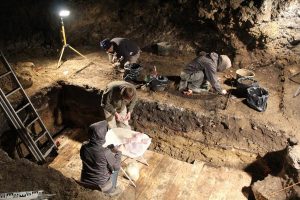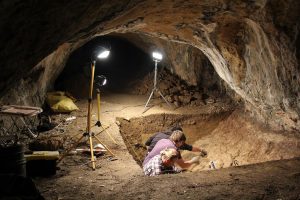Excavations at the caves in Poland’s Kraków-Częstochowa Upland, revealed artefacts including spurs and pottery fragments from 13th and 14th centuries. The cave is surrounded by the legend of Polish king Władysław the Short (1261-1333 AD) hiding in the caves of Ojców National Park.

Local legends tell of king Władysław the Short or Elbow-high (or Ladislaus I of Poland) who has hidden within the caves of the region after fleeing from Kraków from the armies of King of Bohemia, Wenceslaus II Přemyslid. Traditionally the cave associated with the event is the so-called Royal cave, also known as Cave of (Władysław) Elbow-high within the Ojców National Park. So far archaeologists did not have proof for these events, but excavations within some of the caves, as part of the project run by Michał Wojenka, have presented artefacts corresponding to the period of these events. The researchers have analysed the finds from the caves that have been acquired recently and been collected since 19th century, revealing the presence of Medieval spurs and pottery fragments, which date to between 13-14th centuries. The spurs, a direct indicator of presence of knights or other armed individuals, have been dated to between the second half of 13th and beginning of the 14th century – to the times when the Polish king lived. Within the remains of the pottery vessels, archaeologists identified crop seeds, which may indicate that the caves served for storage. The date of the seeds is being established through laboratory analysis.

(after Nauka w Polsce & Michał Wojenka)